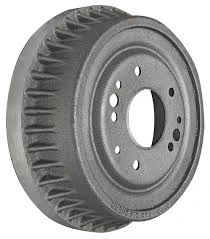
-
 Afrikaans
Afrikaans -
 Albanian
Albanian -
 Amharic
Amharic -
 Arabic
Arabic -
 Armenian
Armenian -
 Azerbaijani
Azerbaijani -
 Basque
Basque -
 Belarusian
Belarusian -
 Bengali
Bengali -
 Bosnian
Bosnian -
 Bulgarian
Bulgarian -
 Catalan
Catalan -
 Cebuano
Cebuano -
 Corsican
Corsican -
 Croatian
Croatian -
 Czech
Czech -
 Danish
Danish -
 Dutch
Dutch -
 English
English -
 Esperanto
Esperanto -
 Estonian
Estonian -
 Finnish
Finnish -
 French
French -
 Frisian
Frisian -
 Galician
Galician -
 Georgian
Georgian -
 German
German -
 Greek
Greek -
 Gujarati
Gujarati -
 Haitian Creole
Haitian Creole -
 hausa
hausa -
 hawaiian
hawaiian -
 Hebrew
Hebrew -
 Hindi
Hindi -
 Miao
Miao -
 Hungarian
Hungarian -
 Icelandic
Icelandic -
 igbo
igbo -
 Indonesian
Indonesian -
 irish
irish -
 Italian
Italian -
 Japanese
Japanese -
 Javanese
Javanese -
 Kannada
Kannada -
 kazakh
kazakh -
 Khmer
Khmer -
 Rwandese
Rwandese -
 Korean
Korean -
 Kurdish
Kurdish -
 Kyrgyz
Kyrgyz -
 Lao
Lao -
 Latin
Latin -
 Latvian
Latvian -
 Lithuanian
Lithuanian -
 Luxembourgish
Luxembourgish -
 Macedonian
Macedonian -
 Malgashi
Malgashi -
 Malay
Malay -
 Malayalam
Malayalam -
 Maltese
Maltese -
 Maori
Maori -
 Marathi
Marathi -
 Mongolian
Mongolian -
 Myanmar
Myanmar -
 Nepali
Nepali -
 Norwegian
Norwegian -
 Norwegian
Norwegian -
 Occitan
Occitan -
 Pashto
Pashto -
 Persian
Persian -
 Polish
Polish -
 Portuguese
Portuguese -
 Punjabi
Punjabi -
 Romanian
Romanian -
 Russian
Russian -
 Samoan
Samoan -
 Scottish Gaelic
Scottish Gaelic -
 Serbian
Serbian -
 Sesotho
Sesotho -
 Shona
Shona -
 Sindhi
Sindhi -
 Sinhala
Sinhala -
 Slovak
Slovak -
 Slovenian
Slovenian -
 Somali
Somali -
 Spanish
Spanish -
 Sundanese
Sundanese -
 Swahili
Swahili -
 Swedish
Swedish -
 Tagalog
Tagalog -
 Tajik
Tajik -
 Tamil
Tamil -
 Tatar
Tatar -
 Telugu
Telugu -
 Thai
Thai -
 Turkish
Turkish -
 Turkmen
Turkmen -
 Ukrainian
Ukrainian -
 Urdu
Urdu -
 Uighur
Uighur -
 Uzbek
Uzbek -
 Vietnamese
Vietnamese -
 Welsh
Welsh -
 Bantu
Bantu -
 Yiddish
Yiddish -
 Yoruba
Yoruba -
 Zulu
Zulu
s cam drum brake
Understanding the S Cam Drum Brake System
The S cam drum brake system is a crucial component in the world of automotive engineering, especially in the design and function of heavy-duty vehicles such as trucks and buses. As a specialized braking mechanism, its efficiency and reliability play a critical role in ensuring vehicle safety and performance. This article explores the fundamental principles behind the S cam drum brake system, its components, advantages, and its applications in modern vehicles.
How the S Cam Drum Brake Works
At its core, the S cam drum brake operates using a unique mechanism that transforms the linear motion generated by the brake pedal into a rotational force that applies pressure to the brake shoes, which in turn contact the drum. The system consists of several key components including the brake drum, brake shoes, S cam, slack adjuster, and various springs.
When the driver applies the brake pedal, the actuation lever pushes against the S cam, causing it to rotate. The S cam is designed with a specific profile that has a wedge shape, allowing it to push the brake shoes outward against the inner surface of the brake drum. As the brake shoes expand, they create friction against the drum, which results in the deceleration of the vehicle.
Components of the S Cam Drum Brake System
1. Brake Drum The cylindrical component that houses the brake shoes. It is usually made of cast iron or other durable materials able to withstand high temperatures generated during braking. 2. Brake Shoes These are mounted on each side of the drum and lined with friction material. The design of the brake shoes allows them to expand when pressure is applied from the S cam.
3. S Cam A pivotal component that converts the linear motion of the brake actuator into rotational movement. Its specific shape is integral to the efficiency of the braking action.
s cam drum brake

4. Slack Adjuster This device automatically adjusts the position of the brake shoes relative to the drum, ensuring optimal contact and performance even as the brake shoes wear over time.
5. Springs These components are responsible for retracting the brake shoes when the brake is released, ensuring that they do not drag against the drum, which would contribute to unnecessary wear.
Advantages of the S Cam Drum Brake System
One of the primary advantages of the S cam drum brake system is its simplicity and robustness. The design is relatively uncomplicated, which not only makes it easy to manufacture but also facilitates maintenance and repair. Additionally, the S cam's inherent design provides a strong mechanical advantage, allowing for greater braking force with less effort.
Another benefit is its reliability in various weather conditions. The drum brake system is less susceptible to water and dirt compared to disc brake systems. This is particularly beneficial for heavy-duty vehicles operating in construction or off-road environments, where debris and moisture can significantly impact braking performance.
Applications
S cam drum brakes are predominantly used in heavy-duty trucks, buses, and trailers. They are favored in these applications due to their ability to handle significant weight and provide reliable braking power over long distances.
In conclusion, the S cam drum brake system is an essential technology in the transportation industry, providing robust, reliable, and efficient braking for heavy-duty vehicles. Understanding how this system works and its components can help appreciate its role in vehicle safety and performance. As advancements in automotive technology continue, the evolution of braking systems will also play a significant role in enhancing road safety and efficiency.
-
What Are Drum BrakesNewsJul.07,2025
-
Understanding Brake Drum MaterialNewsJul.07,2025
-
Semi-Trailer Brake Drum: A Key Component for Extreme Loads and Long-Distance TransportNewsJul.07,2025
-
Drum Brake Pads for SaleNewsJul.07,2025
-
Brake Drums for SaleNewsJul.07,2025
-
Brake Drum ManufacturerNewsJul.07,2025
-
Aluminum Brake Drums: The Future of High-Performance CarsNewsJul.07,2025
